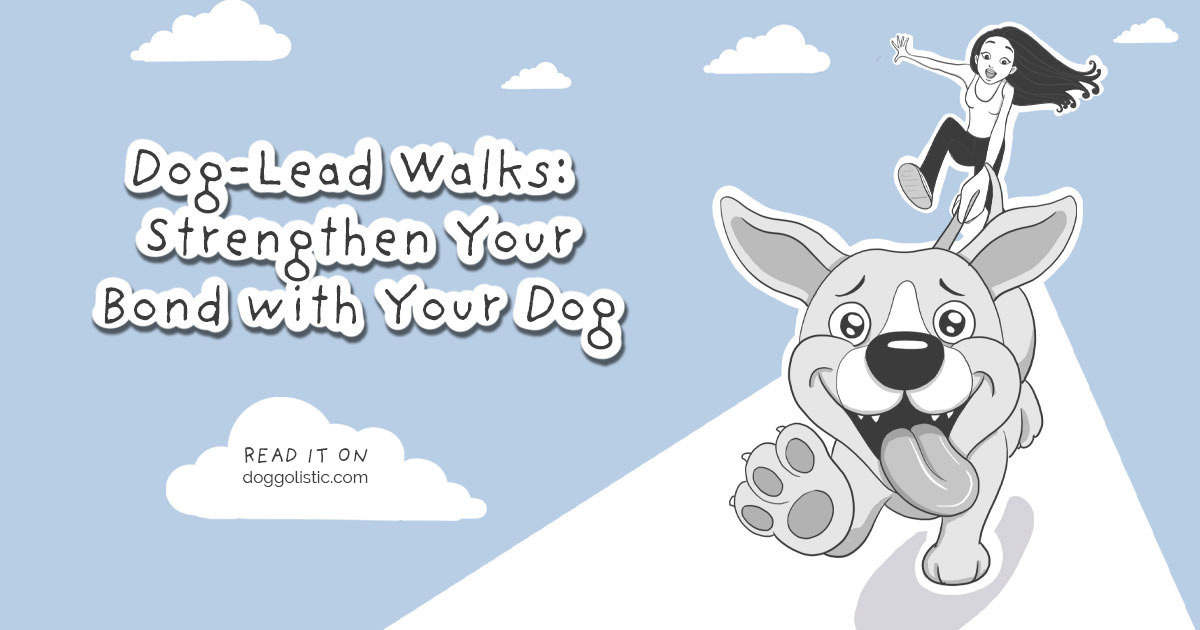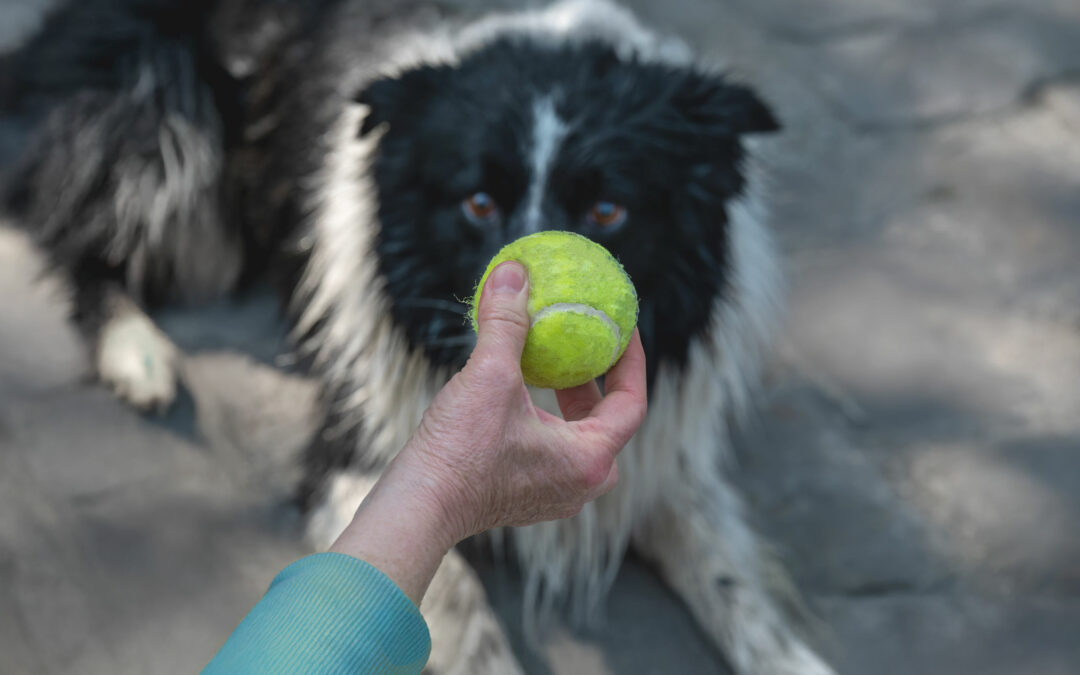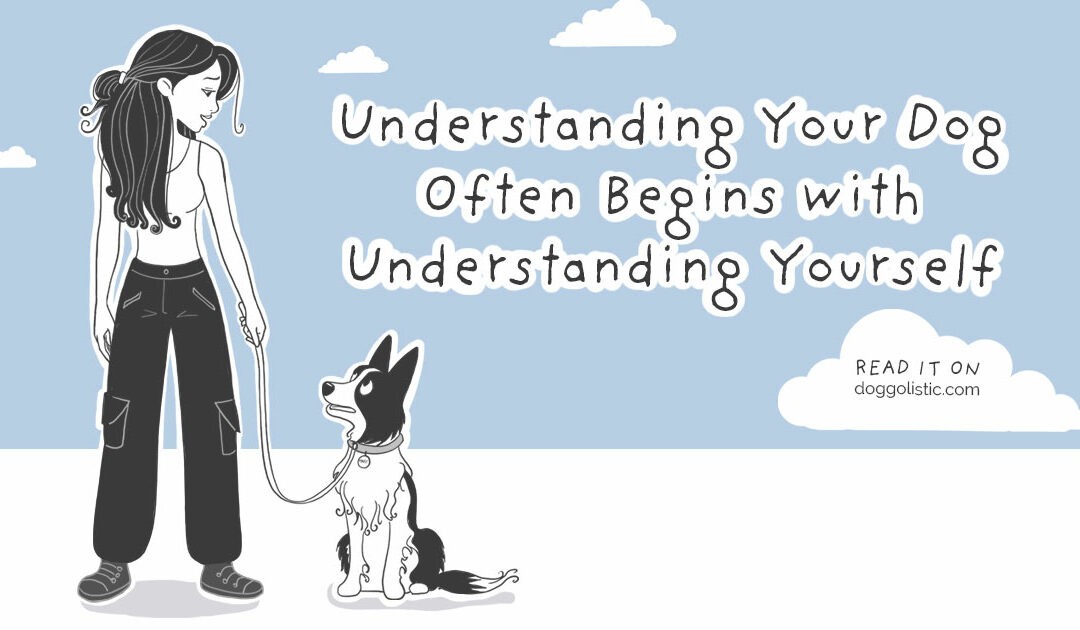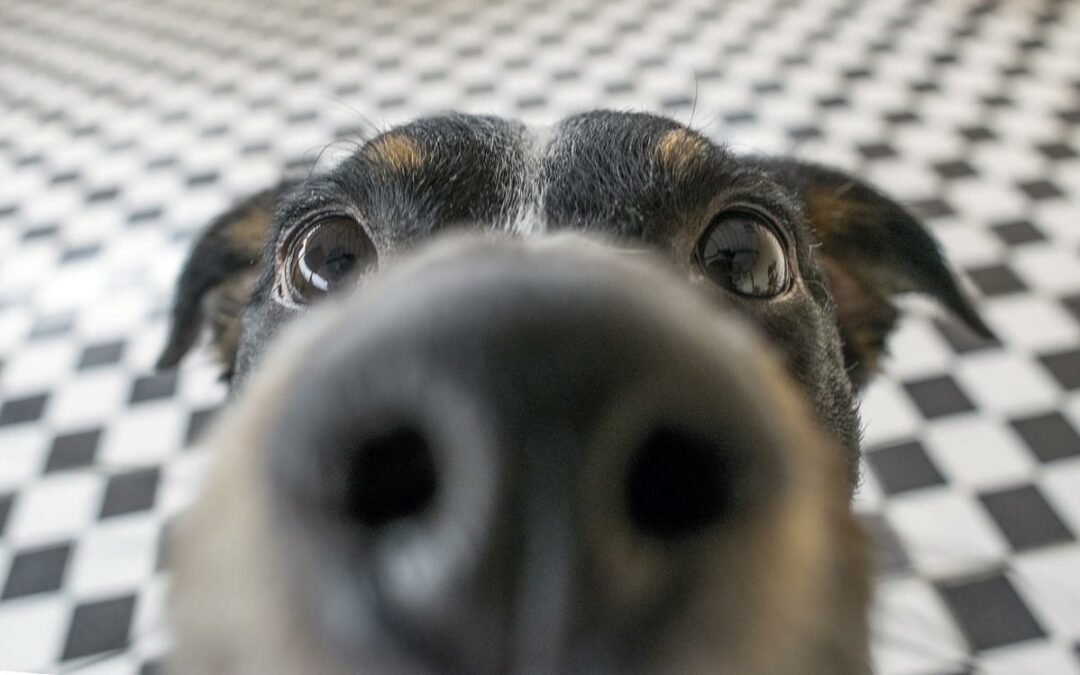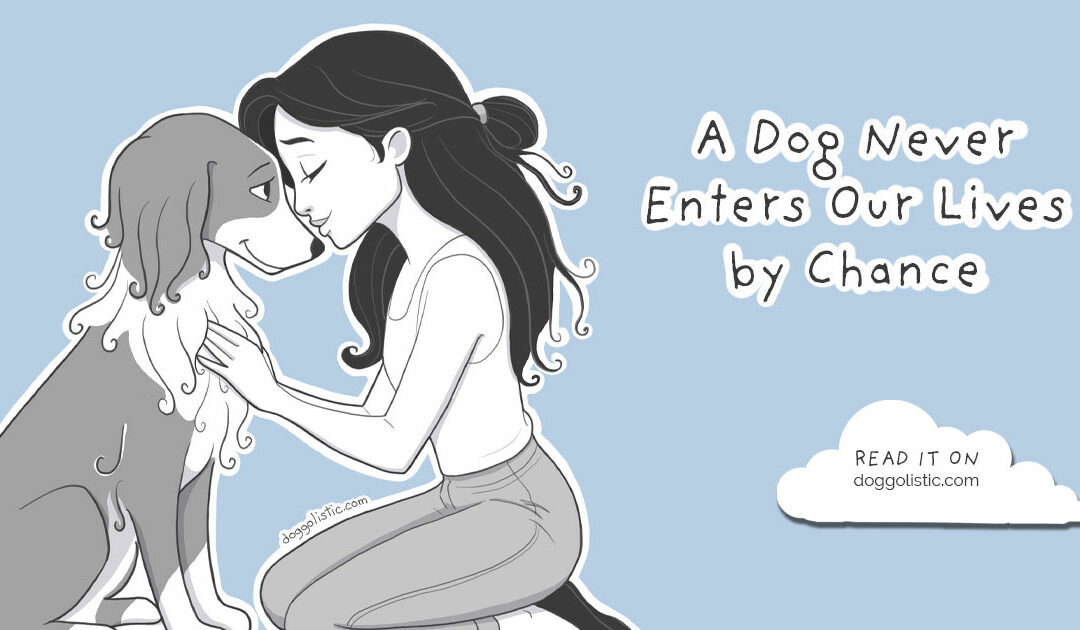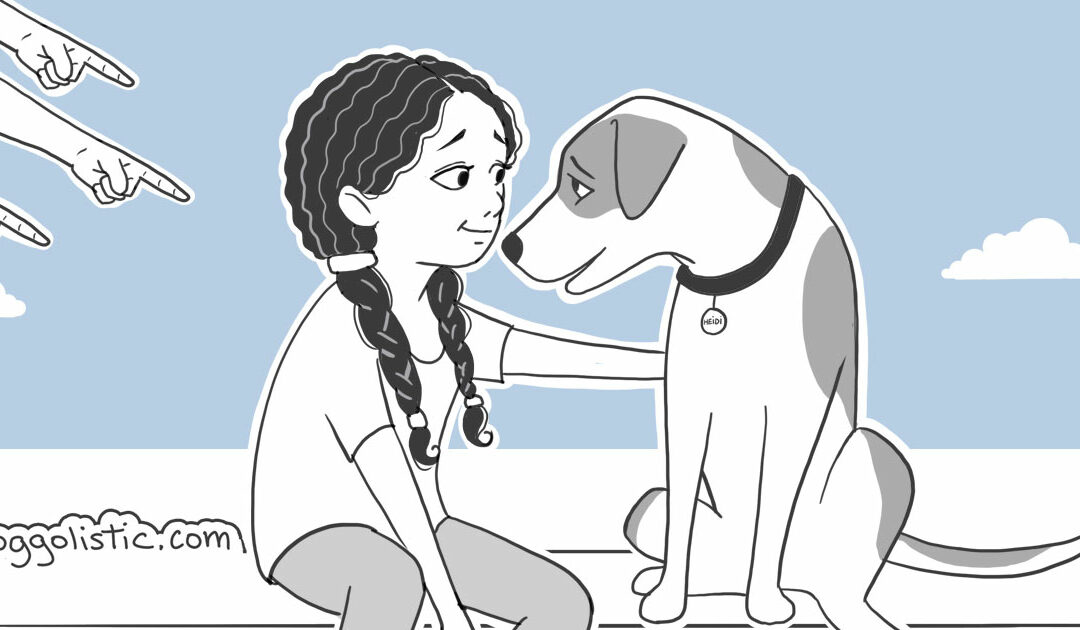Dog-Lead Walks: How a Simple Walk Can Help Build a Deeper Bond with Your Dog
You step outside and your dog immediately stops. Not for a quick sniff, but for a long, intentional pause in front of a tuft of grass. Then, just as suddenly, she changes direction, following invisible trails in the air that only she can perceive. You follow, not rushing, not questioning. This is the heart of a dog-led walk: a walk with no destination, no agenda, just presence.
In this reversed kind of walk, it’s your dog who takes you out. She chooses the path, the pace, the pauses. What might otherwise feel like a routine turns into a ritual — one with six legs and two hearts. Neither a training session nor just a way to burn energy, this moment becomes fertile ground for trust to grow, for the human-dog connection to deepen. Your dog gains confidence — in herself, and in you — and you, in turn, are offered a rare opportunity to let go.
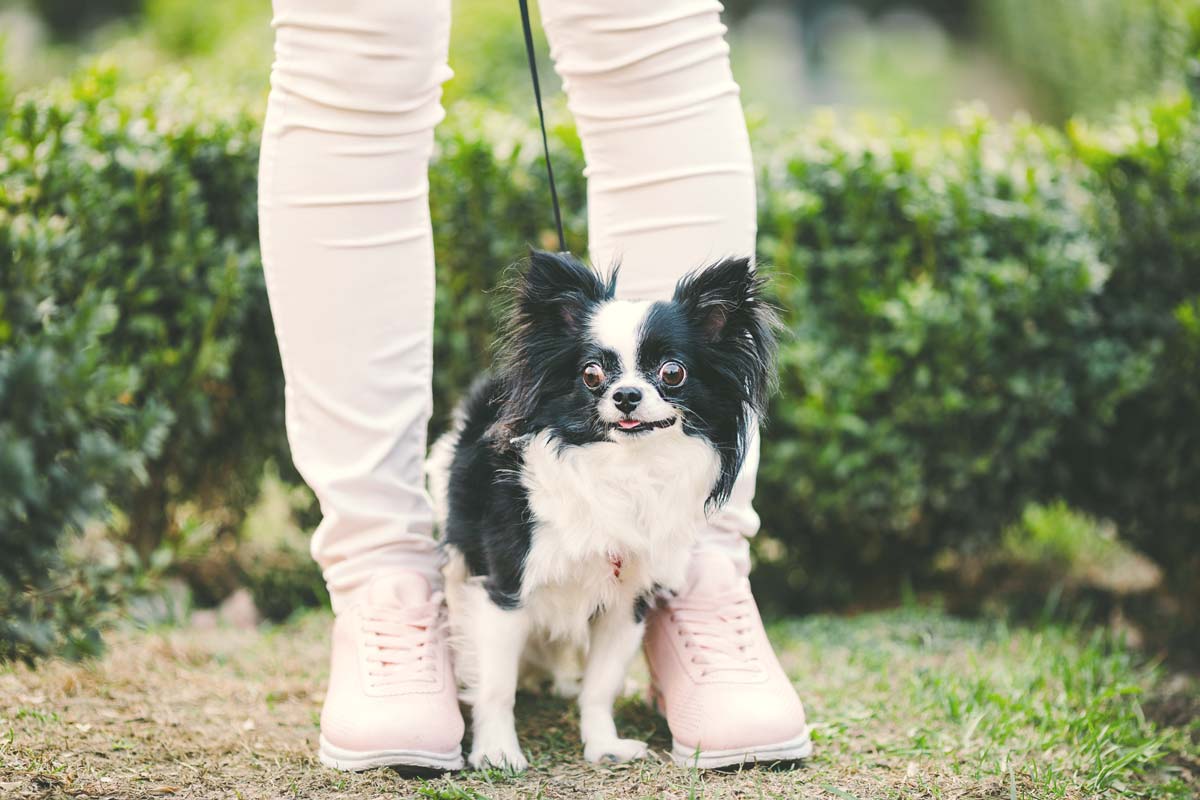
What it changes for your dog
Most leash walks follow the same pattern: the human leads, the dog follows. She adjusts to your step, stops when you stop, keeps going when she’d rather pause. In short, she goes along with the route without really choosing any of it. Even if she enjoys the outing, her instincts are often held back. A dog-lead walk shifts the balance. It gives her a sense of agency again.
When your dog leads the way, she activates her full sensory intelligence: tracking scents, choosing where to go, deciding when to stop, marking her territory, daring to explore. It’s no longer just physical movement, it becomes a full, rich, mental adventure. That structured freedom feeds not only her senses, but also her emotional well-being and her autonomy.
A dog who is given this kind of freedom gains confidence, partly because she feels listened to and respected, and partly because she’s free to explore unfamiliar paths. That sense of trust helps her handle fears with more ease, become more curious, regulate herself more naturally, and feel grounded in her environment.
She’s no longer just an extra on the walk, she becomes the one writing the story, becoming an active participant in her own walk, therefore in her own life.
A powerful alternative where off-leash isn’t an option
In some parts of the world, this way of walking takes on even more meaning. In North America, for instance, where dogs often aren’t allowed off-leash, even in green spaces, where everything is fenced, regulated, and supervised, the leash can sometimes be their only space for expression.
In that kind of context, the dog-lead walk offers your dog the impression that she still has a say in where he’s going. Even when tethered, she still chooses. It’s not absolute freedom. It’s not better than a free run in nature. But it feels like freedom. And for an animal navigating a human-made world full of rules and restrictions, that little pocket of choice can change everything.
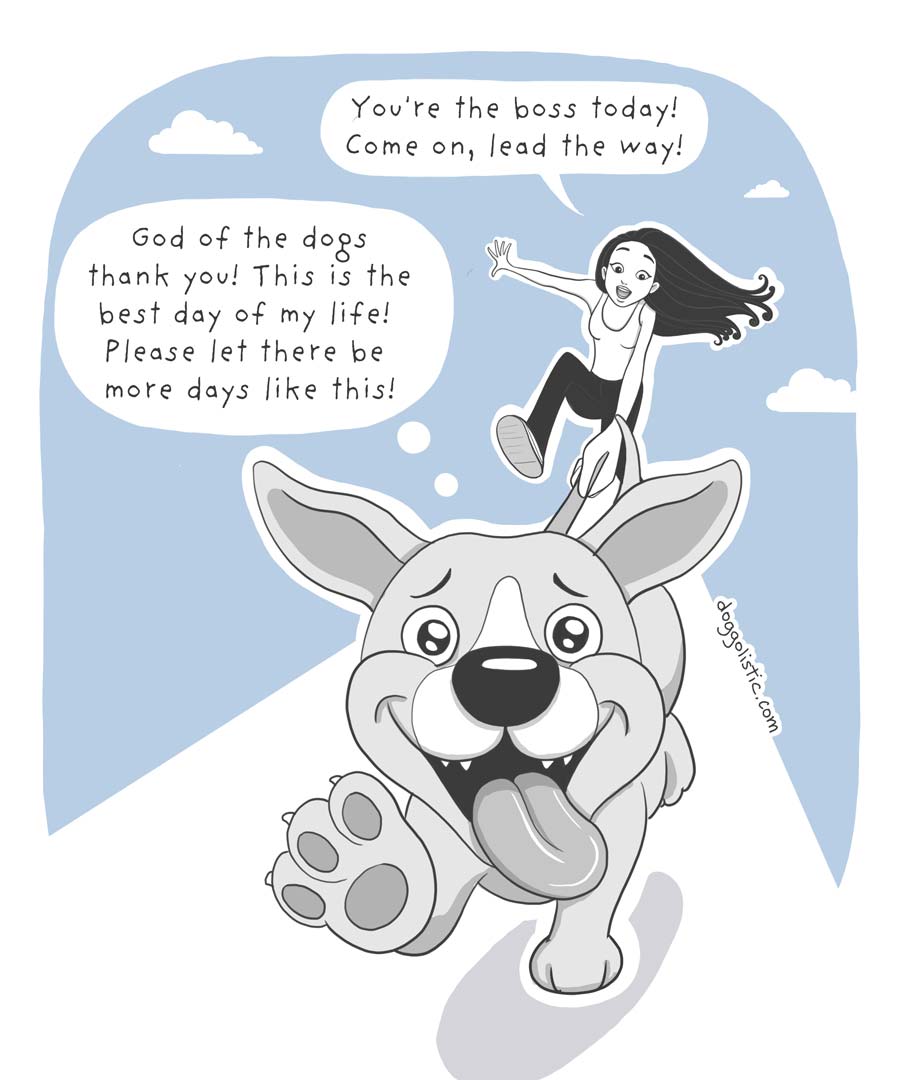
What it changes for you
This isn’t just transformative for your dog, it’s a shift for you, too. Accepting to follow your dog without directing means agreeing to slow down instead of rushing, to observe rather than control, to listen instead of speak, to let go rather than manage.
It invites a shift, not just in pace, but in state of mind. You stop walking to tick a box or to burn energy. You start walking to simply be together, at your dog’s pace. Within that shift, an unexpected stillness opens up.
Dog-led walks reconnect you to the present. You begin to notice things again — light through leaves, a shift in the wind, the quiet wonder of your dog just being a dog. And yes, there’s joy in not knowing where you’re going. Letting someone else, someone small, furry, and full of instinct, be your guide opens a different kind of freedom. Not the kind you take, but the kind you receive.
What it builds between you
The real magic happens in the space between you.
A different kind of bond begins to take shape — not a top-down relationship, but something horizontal, fluid, responsive.
Connection isn’t built on commands anymore, well executed or not, but on a shared rhythm you learn to find together. You start noticing who your dog really is — her pace, her preferences, her impulses — by reading her quiet signals: a long pause to make sure she’s fully decoded every molecule of scent on a single blade of grass, a sideways glance to check you haven’t disappeared into a hole ten steps back, a subtle tension in the leash that reshapes the journey in a whole new way. And your dog, in turn, learns that she’s allowed to be herself without being corrected every time she takes a detour.
This kind of relationship, built on mutual attention and shared observation, continues to ripple beyond the walk. Your dog becomes more attentive to you, simply because she feels you are more attentive to her. This reciprocal respect forms the basis of a deeper, more fluid connection. One that doesn’t rely on control, but on quiet listening.
How to get started with dog-lead walks
You don’t need to live in the countryside to try this kind of walk. Just a bit of calm and intention. Here are a few simple guidelines to begin:
- Choose a quiet place: a calm street, a quiet park, a forest trail. What matters is being away from traffic, noise, and heavy foot traffic.
- Use a long leash: from a 3-meter leash (about 10 feet — which, by the way, should be your everyday go-to) to a 10-meter long line (about 33 feet — which does take some practice to handle), to give your dog space without compromising safety.
- If possible, have a dedicated leash: a leash that looks or feels different from your regular one. This helps your dog recognize the shift. She’ll know: this is a different kind of walk, one where she gets to decide.
- Let her guide you: don’t pull or redirect unless there’s a real need. Just watch. Follow. Let her sniff, mark, explore, pause.
-
Put in as much energy as you can: try to match your dog’s pace as often as possible, and if it pushes you a little, hey, it’s good for your cardio 😉. Dogs aren’t built to walk at our average human speed. While we cruise along at 4–5 km/h (2.5–3 mph), your dog’s natural pace is more like 8–9 km/h (5–5.5 mph). Imagine having to spend your whole life walking at the pace of your two-year-old child or your 95-year-old grandmother and you’ll get a sense of the quiet frustration your dog feels every day.
-
Stay present: no phone, no distractions. Your body language, your pace, your attention — that’s how you speak on this walk.
A simple walk, a complete philosophy
Embracing dog-lead walks isn’t just about trying a new technique. It’s about shifting the way we see our dogs. It’s about choosing not to control everything, not to interpret everything, and opening up to the idea that the other — even a dog — might sometimes be the better guide.
It’s also a way to apply, in real life, the principles of canine ethology: recognizing that a dog’s behavioral needs go far beyond just getting walked and being told what to do. They include freedom of movement, of scent, of choice.
What you’ll get in return is a relationship that breathes easier. A dog who trusts more. A human who pays closer attention. And a connection that becomes a quiet alliance — respectful, mutual, and rooted in presence.
The leash, no longer a tool of tension, becomes something else entirely: a soft line of trust, gently linking two beings who no longer need to pull in opposite directions. 🐾🖤
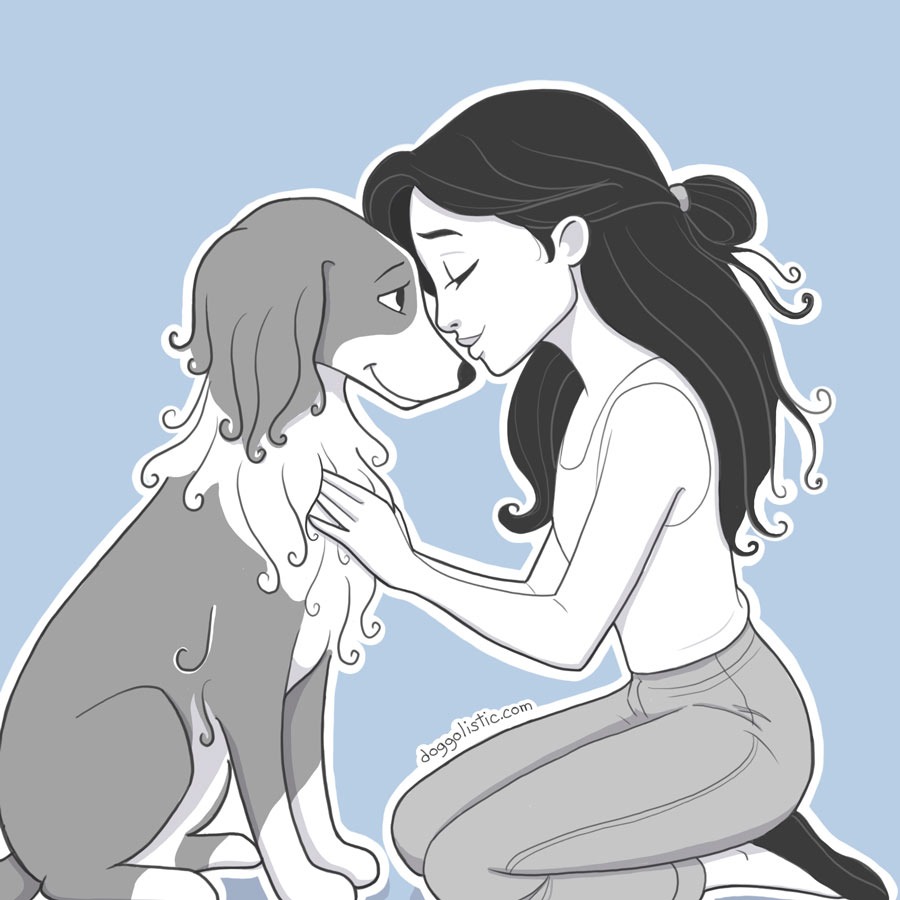
As a dog behaviorist and trainer, I work on the subtle bond between humans and dogs — with all its beauty, its wobbles, and its life. I help humans better understand their dogs — and sometimes, just a little, the other way around, too.
FAQ
What is a dog lead walk?
A dog lead walk is a walk guided by your dog: you hold the leash, but it’s your dog who chooses the path, pace, and pauses. It’s a unique experience in canine ethology that promotes connection, trust, and mutual understanding.
How does a dog lead walk strengthen the human dog bond?
By allowing your dog to lead, you enter into a shared rhythm and dialogue — beyond obedience or exercise. This simple change plugs into discovery, emotional freedom, and deep connection, helping create a relationship built on presence, not hierarchy.
Why are leash walks often restrictive for dogs?
On typical leash walks, dogs adapt to your pace and your stops, limiting their natural instincts. A dog lead walk flips that dynamic: your dog takes the lead, igniting his sensory intelligence and giving him a role in the walk — building autonomy, curiosity, and emotional well-being.
Is it suitable for all dogs?
Yes — as long as you adapt the location and the pace. Puppies, seniors, anxious dogs, bold explorers: every dog can benefit from this kind of walk, at their own rhythm. That’s exactly what makes dog lead walks so special — they respect each dog’s unique needs.
Is this safe, especially in urban environments?
Yes—when done mindfully. Use a long leash (3–10 meters/10–33 feet) and choose calm locations. Always remain vigilant. The dog lead walk isn’t about letting your dog run free—it’s about structured freedom within safe limits.
Can a dog lead walk help a nervous or anxious dog?
Absolutely. This approach fosters confidence and reduces stress by encouraging the dog to make choices within a safe framework. Giving your dog autonomy often reduces fear, encourages exploration, and builds self-regulation.
What do people gain from the experience?
People learn to slow down, observe, listen, and let go of control. This shift leads to a quieter mind, heightened presence, and an inner spaciousness. The walk becomes not just physical exercise, but a meaningful pause in the day.
Where can I practice dog lead walks if off leash isn’t allowed?
Especially in countries with strict leash regulations (like many places in North America), a dog lead walk offers felt freedom while staying tethered. It’s an accessible, respectful alternative that still grants your dog meaningful agency.
What makes this different from regular walks or training?
It’s not about commands or structured reinforcement. It’s a philosophy of being together, led by your dog’s curiosity and instincts. This fosters authentic connection rather than compliance, and aligns with core principles of canine ethology.
Why should I always use a 3-meter (10 feet) leash at minimum?
Whether for a dog lead walk or a regular walk, it’s the bare minimum as it’s the only way your dog can actually walk. Most standard leashes are too short to allow natural movement, let alone exploration. With less than 3 meters (10 feet), your dog constantly feels tension, is forced to adapt to your pace, and can’t engage in healthy, instinctual behaviors like sniffing, marking, or observing.
A 3-meter (10 feet) leash gives your dog space to breathe, explore, and make micro-decisions — without being pulled or redirected at every step. It’s not “extra”— it’s respectful, necessary, and far more natural.

